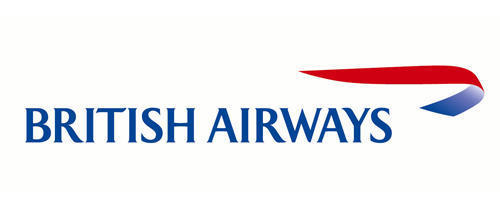British Airways Numerical Reasoning Test
Page contents:
Jump to:- About British Airways numerical reasoning tests
- British Airways application process stages
- British Airways numerical reasoning test questions
- Numerical reasoning tests and who uses them
- What you should know before taking your numerical reasoning test
- Different types of numerical tests
- Answered questions
About British Airways numerical reasoning tests
British Airways looks for employees with a high numerical ability. Applicants have to pass a numerical test before being offered a position.

British Airways use the following tests in their selection process:
- Verbal reasoning test
- Numerical reasoning test
- Logical reasoning test
- Situational strength test
| Assessment section | Recommended Practice Pack |
|---|---|
British Airways Numerical Test | Numerical Test Pack
|
British Airways Logical test | Logical Test Pack
|
Numerical reasoning tests are a fair and objective way for British Airways to assess a wide range of applicants, each having different experiences and different qualifications. By analysing the results of a standardised numerical reasoning test, British Airways are able to quickly see which candidates are suitable for the role and which are not. This sort of information about candidates’ skills is difficult to glean from interviews and qualifications alone, so they use professional psychometric tests.
Often, British Airways will ask applicants to take a numerical test online, which you can take from home. When the numerical test is used early on in the application process like this you will have to achieve a minimum score before you progress to the next round (typically a score in the top 50% of applicants is required however this does vary role to role). Further along in the selection process you might be asked to attend an assessment centre or interview where you will be asked to sit a numerical test again. This is so British Airways can verify the person scoring highly in the test is indeed the person applying for the job.
British Airways Application Process Stages
Stage 1
| Application | The whole application process will vary depending on the British Airways region you are applying to. Some of the stages may not apply, and some may appear in a different sequence. However, all will require that you complete an application form. |
|---|
Stage 2
| Online Aptitude Test Verbal, numerical, logical and/or situational strength | Once your application has been reviewed and successfully passed screening, an online assessment will be employed. Once again, each region will operate under their own system. |
|---|
Stage 3
| Interview | Upon passing the psychometric tests, you will then be asked to take part in an interview. Typically, in an interview you will be given a set of questions to respond to. You will then use the software provided to record your responses to these questions. Responses are typically 30 seconds to a minute long. Use the freedom here to plan your responses to the questions well, even if that means redoing the recording. Ensure that your answers are relevant to the questions asked. |
|---|
Stage 4
| Assessment Centre | For the final stage of the process you will be invited to an assessment centre and asked to take part in some exercises:
|
|---|
Join those now working at top companies
Don't settle for 'try again next year'. Let us help you pass employer tests first time.
Try now for free
British Airways Numerical Reasoning Test Questions
British Airways use SHL Verify Interactive tests. They look at your ability to interpret numerical and graphical data and answer questions which require numerical analysis of the data provided. The numerical test will be assessing your speed and accuracy. The answers are multiple choice and you should try to work quickly within the time limit, but also accurately. Negative marking is unlikely to be used but do not guess answers, as this will show up in your accuracy score. Sometimes you will find that you can make a best guess estimate by deducing that some of the answer options are incorrect. This approach to verbal tests will come with practice, and you will become familiar with the type of verbal tests used by companies such as British Airways.
Numerical reasoning tests and who uses them
Companies are using numerical reasoning test more and more in their application process that candidates must go through. Numerical reasoning tests are favoured when the role being recruited for requires interpretation and manipulation of numerical data on a regular basis. A person's score in a numerical reasoning test is a good indicator of their ability to work well with numbers. This is very important in finance, accounting and actuarial positions.
British Airways use SHL Verify Interactive numerical reasoning tests as part of their recruitment process to help them select the best candidates for a particular role.
So as a graduate or senior candidate applying for a job at British Airways you might feel like the numerical reasoning test is an unnecessary hoop to jump through. But you should bear in mind that British Airways are asking you to complete the numerical test as much for your own benefit as theirs; if you are not suitable for the role, a psychometric test will usually identify this. Research has shown that psychometric tests, such as those used by British Airways, are a better predictor of job performance than traditional selection metrics such as level of degree achieved.
What you should know before taking your numerical reasoning test
The numerical operations required in standardised numerical tests are of a level which most applicants can achieve. The difficult aspect comes with carrying out the calculations quickly and accurately within the time limit. You will be allowed a calculator for your numerical test at British Airways, so make sure you know how to perform these basic operations. Percentage increases and decreases are the most common questions which catch out candidates. Here is a list of the most common operations you can expect in your numerical test:
- Addition
- Subtraction
- Multiplication
- Division
- Percentages (including percentage changes)
- Ratios
Different types of numerical tests
Most questions in most numerical reasoning tests follow a standard format displaying numerical data, the question and answer options on screen. These can be arranged differently, but each test will stick to the same layout throughout. The numerical data may be a graph, table, chart or other visual form. The question text may contain extra information which adds to what's given in the table, this might also be necessary to answer the question correctly. Lastly, the answer options are almost always multiple choice. Multiple choice answers can vary, however. You may have 4 options to pick from, 5, maybe 10, or more. The more answer options to pick from, the slimmer the chances are that you can obtain the correct answer by guessing.
Some publishers will have less subtle variations in their test from what's described here. Cappfinity for example, will ask you to rank the answer options by a particular criteria. Sometimes, in TalentQ tests, the question may have more than one answer, and you will be told to select two, or possibly more answer options from those available.
Answered questions
How difficult are your tests?
The same difficulty as real tests. Generally real employer selection tests don't differ that much in terms of difficulty which is why they compare your score against norm groups. Our practice tests are pitched roughly at graduate level, but this means they are actually suitable for preparing for all levels of job: entry; apprentice; graduate; senior; director.
Are they compatible with my Mac / Tablet / Phone?
Yes, and PC, and Linux and smartphone and Android and...everything. Our practice tests will run on all systems and they are responsive so they will work well on tablets and smartphones too!
How many times can I take the tests?
Unlimited. You can take our practice tests as many times as you like; there is no limit. But to be honest, after taking the same test a few times you start to remember the answers, so that’s why we have lots of tests.
